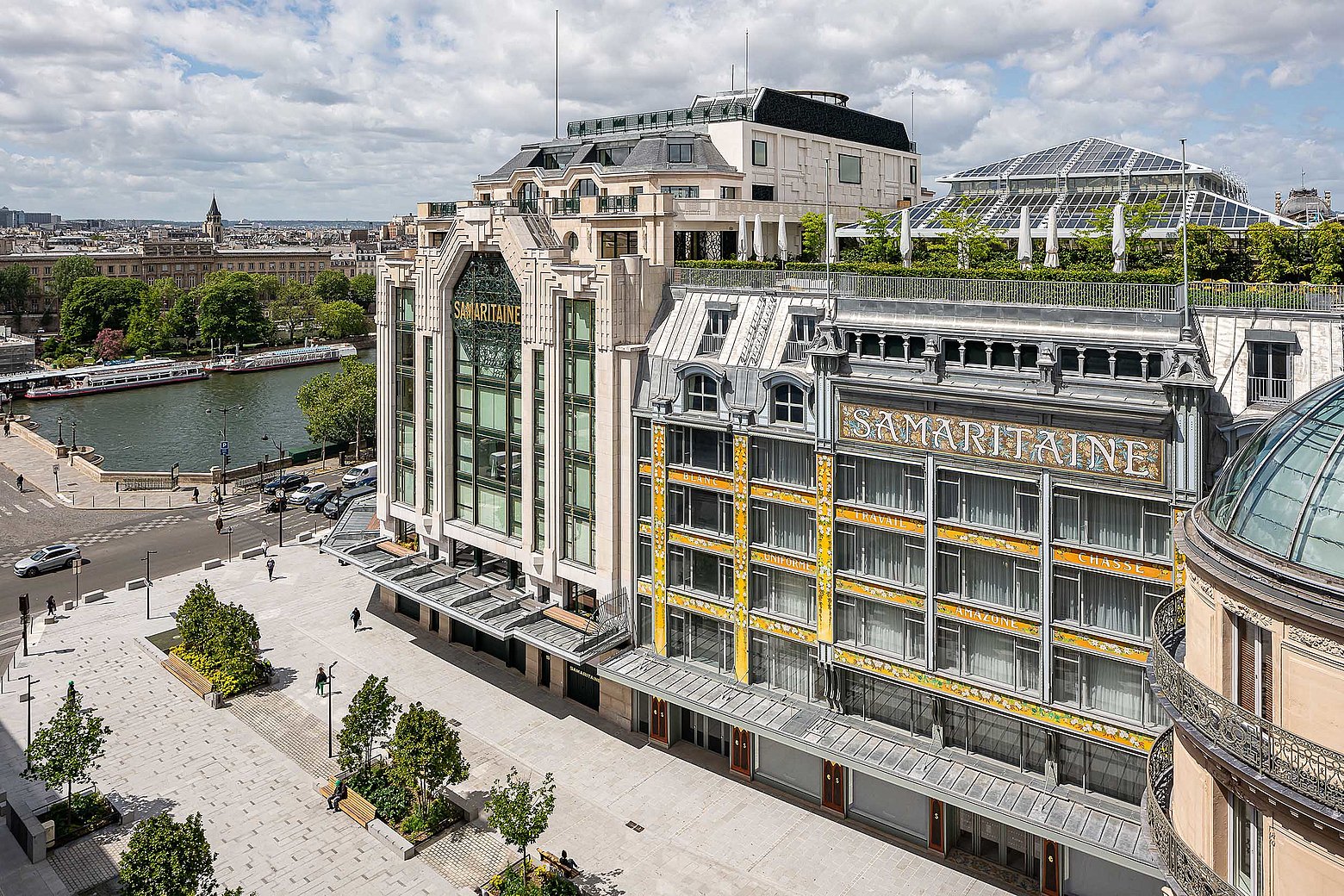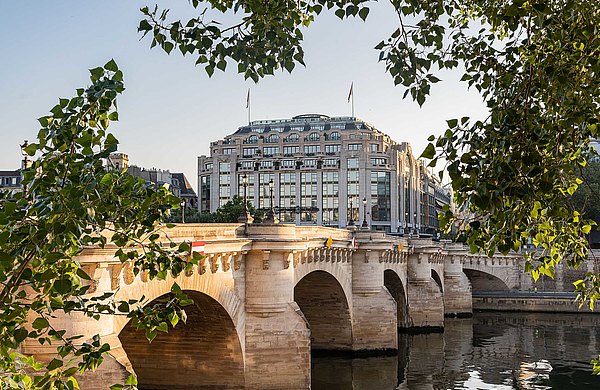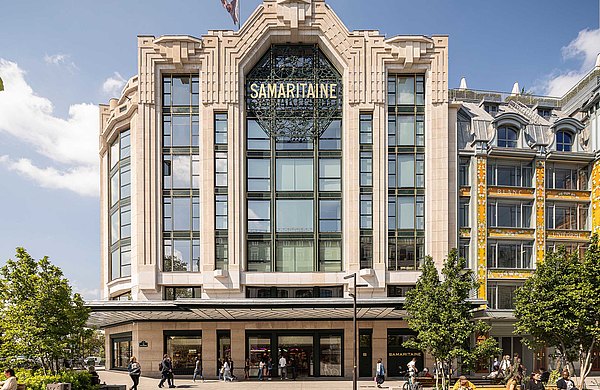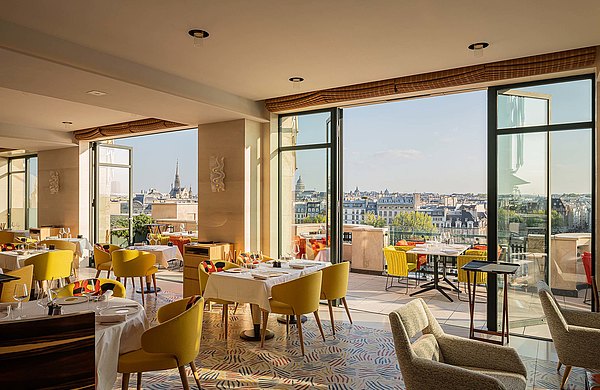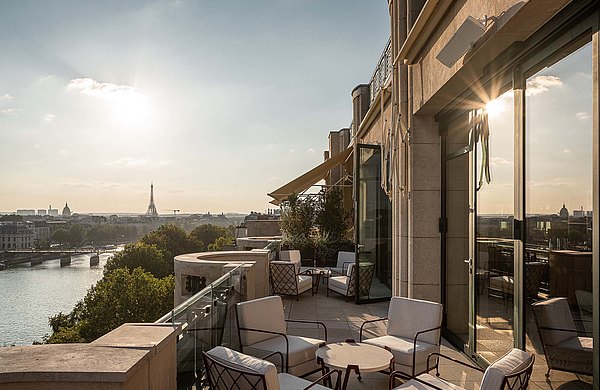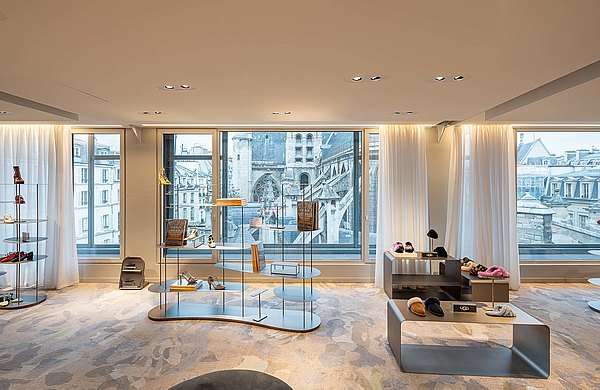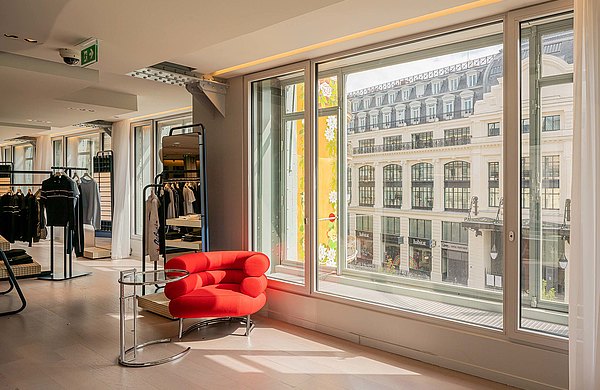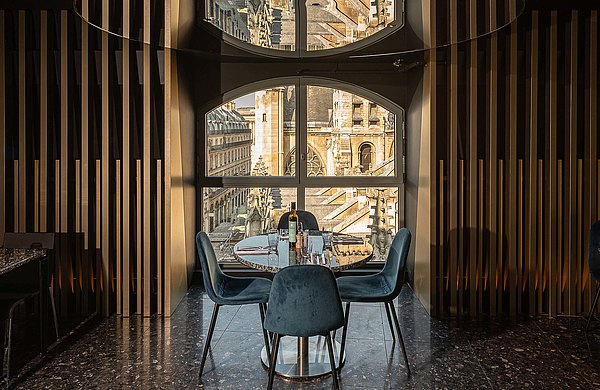La Samaritaine Paris
La Samaritaine: architectural icon with a new profile
Heritage-compliant façade renovation with window systems from Forster
The reopening of La Samaritaine heralds the dawn of a new era for what was once the largest department store in Paris: in addition to the long-standing department store, the imposing ensemble of buildings now also houses a luxury hotel, office and residential space as well as a children’s nursery. During the revitalisation, special attention was paid to the renovation of the historic Art Nouveau and Art Deco façades in accordance with the ensemble’s listed building status. With their elegantly slim steel profiles, the Forster window systems used contribute to the legendary grand magasin’s resplendent new look and meet the energy criteria of a sustainable building.
When La Samaritaine closed in 2005 following fire safety concerns, the future of the ensemble of four buildings (total retail area: 48,000 square metres) was uncertain. Boasting a prominent location in Paris’s first arrondissement, the architecture is equally impressive – especially that of the two listed buildings that were in need of extensive renovation. One is the monolith designed by the architect Henri Sauvage with its quasi colossal Art Deco façade. The other is the adjoining structure by the architect Frantz Jourdain, whose Art Nouveau façade embodies a virtuoso interplay of iron girder structure, generous glazing and floral ornamentation. As part of a mixed-use development project by owner LVMH, the two buildings were comprehensively refurbished and converted, and complemented by a sensational new building designed by Pritzker Prize winners SANAA.
Faithful façade reconstruction
In addition to its imposing Art Deco façade, the Sauvage building has always been the world-famous “face” of the La Samaritaine complex, not least due to its high-profile location on the banks of the Seine in the heart of Paris. In line with the mixed use envisaged by owner LVMH, the 1920s building now houses the new flagship of the group’s luxury hotel chain Le Cheval Blanc on the upper floors. Architect Edouard François and interior designer Peter Marino are behind the realisation of the 72 hotel rooms and suites as well as several restaurants and a panoramic terrace featuring a wealth of greenery. The challenges of the 15,000 square metre project proved as complex as they were demanding from the word go: while the requirements of the preservation order for the listed building stipulated that the renovated façade remain true to the original, it also had to meet set energy standards.
In close consultation with the listed building agency, the architects opted to base their renovation of the façade on the forster unico and forster unico XS steel window system. The particularly slim steel profiles of the segmented bay windows bathe the interiors in light and offer unobstructed views of the Seine. While the new window systems with their apertures to the original dimensions and gold-decorated profiles are barely distinguishable from the originals, they ensure maximum 5-star well-being for the hotel guests inside: the optimal thermal properties of the insulating glazing achieve a comfortable indoor climate in winter as in summer.
Second skin for the historic Art Nouveau façade
As part of the La Samaritaine’s renewal, the building designed by architect Frantz Jourdain at the beginning of the 20th century was repurposed and made more energy efficient by the Japanese architectural practice SANAA. The original concept of providing maximum daylight is now also reflected in the building’s new appearance: the famous, listed, “Verrière” was given a modern counterpart in the form of another glass-canopied atrium. As a result, not only do the retail spaces benefit from generous amounts of light all the way down to the lower floors, but so do the new office spaces in this part of the building, the 96 residential units and a children’s nursery.
Maximum natural light was also one of the key design criteria for the imposing Art Nouveau façade of the Jourdain building, which is some 40 metres in length and 20 metres in height. The large window areas are incorporated into a grid of structuring iron girders and enamelled lava stone panels advertising some of the former department store’s wares alongside floral patterns. Here, the listing agency required comprehensive preservation, which prompted a double-skin façade solution in accordance with the specified energy requirements. However, since the newly planned second façade structure had to remain largely invisible from the outside, the architects opted for the forster unico window system on the upper floors, accompanied by the forster fuego light fire-resistant door system: the plain steel profiles provide maximum transparency and meet all functional and aesthetic requirements. The “second skin” thus provides effective sound and heat insulation while at the same time establishing a harmonious relationship with the high-quality furnished interiors.
Sustainable architectural icon
The comprehensive renovation also finds La Samaritaine entering a new era in terms of sustainability, as evidenced by the building certifications already achieved. These include international awards – HQE (Haute Qualité Environnementale), LEED (Leadership in Energy and Environmental Design) and BREEAM (Building Research Establishment Environmental Assessment Method) for the retail spaces, hotel and offices – and the Patrimoine Habitat & Environnement Effinergie for the new apartments. With their profiles made of 100% recyclable steel, Forster’s window systems make a contribution to this. Alongside the use of renewable energies such as geothermal energy and solar hot water, the windows’ optimal thermal properties ensure that the targeted low primary energy consumption of the listed buildings is only 80 kWh/m² per year.
Paris, Francia
Window systems forster unico, forster unico XS
Fire-resistant door system forster fuego light
Metal fabrication: Chauvet SAS, Vouillet (F)
Architecture: Edouard François, Paris und SANAA (Sejima And Nishizawa And Associates), Tokio
Interior design (hotel): Peter Marino Architect, New York
Client: LVMH Moët Hennessy – Louis Vuitton SE, Paris
General contractor: Vinci Construction, Rueil-Malmaison (F)
Photos: We are Contents / Stéphane Aboudaram, Marseille

